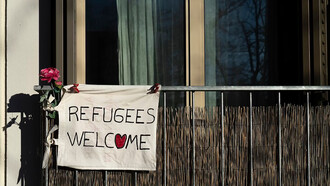A year ends, and another begins. From disruption to transition, the arc linking the dots on the effects of the pandemic is traced. And indeed, the subject has us fed up and also scared; It lodges in our mind, either as a ghost we want to ignore or the enemy we definitely want to avoid. By fortune, 2023 is finally likely to be the year the world moves to the next normal. How prepared are we to take the plunge?
It may seem that a change of calendar does not change much, however, it presents us with an opportunity to give ourselves some time to understand the direction that the world is taking and to appreciate the possibilities that will be presented. It's about being prepared. As executives and entrepreneurs take stock of what has just happened and what is to come, they can prepare to face the risks and seize the opportunities that lie ahead.
At the international level, there is everything: on the one hand, there is much more optimism regarding economic trends. Even in the short term: expectations are improving in Asia and the Americas. On the other hand, unemployment remains a concern in Europe. We are swaying between the extremes of hope for better times and the pessimism that confronts us with a harsh reality.
Obviously, this opens a range of perspectives for those companies that are ready to offer their customers the products and services they demand as compensation and the prudence with which we must approach the future. In the next normal, McKinsey experts Seader and Singhal say that a stage they called "revenge shopping" is coming, and it refers to many consumers opening their wallets to purchase goods and services after a period of confinement and buying as a retaliatory compensation. For example, just look at trends, luxury and fashion are growing their sales.
Other trends to ponder, none of which are traditionally associated with recessions, include a surprising growth in the number of startups daring to start operations. Surprisingly, new businesses are being born. There is an incredible increase in entrepreneurship activity, especially for projects that address these specific changes in consumer behavior.
One thing we can be sure of, 2023 will look nothing like 2019. Four years had gone by, nothing will go back to where we left them. Everything moves from place to place and some of those movements are beneficial. There is hope for a renewed social contract but there are scary menaces in the scenario. The views of statesmen and executives are being renewed, yet some are willing to go to the past. Overall, we have seen how national governments have increased their fiscal spending as a percentage of international products in social assistance programs well above last year, and the private sector has made efforts to provide protection and security to employees. Combined, these interventions have provided an economic cushion and some initiatives have the potential to translate into long-term solutions to protect people from the immediate effects of future crises. Of course, this breeds hope.
In terms of the path from disruption to transition, the pandemic unleashed a new era of change for businesses. To be sure, businesses at all levels have seen firsthand the effects of high-consequence, low-probability risks. While corporate decision-makers or entrepreneurs can't plan for all potential risks, examining some ways they can prepare for extraordinary risks and determine what protections investments are worth and positioning for better resilience is one of the great lessons of 2020.
The learning that periods of uncertainty bring is to leave aside what is not strictly necessary. In other words, we learn to avoid waste. The surprising thing is to realize how many things we thought were indispensable and are not; How many expenses we have been able to reduce, without reducing our productivity. Conversely, we have been able to reflect that many of the savings we made were misunderstood. We understood that there are investments that cannot be postponed without jeopardizing the progress of our operations.
As directors, managers, entrepreneurs, and entrepreneurs continue to develop their strategies to go out and face the pandemic, there are many companies that have found a successful trajectory with transformations that balance portfolio movements and performance improvements. They are prioritizing business creation for organic growth which has resulted in faster growth, even in the midst of this emergency. Stronger businesses are also reinventing themselves through operating models that adapt to circumstances, capitalizing on this malleable moment with agile processes, and more flexible ways of working that result in greater speed and productivity.
Executives around the world are thinking that the next few months will be critical. It is worth staying calm. Perspectives and insights on the management issues that matter most, from leading through the crisis to risk management and digitization of operations must consider a cautious view of what the new normal will look like. You must walk with lead feet, but you have to move.
Being very optimistic is the same as being very pessimistic. It is better to have your feet on the ground, considering that the new normal has to go through a moment of recovery and that this will come hand in hand with digital processes. We need to reflect on the path to true transformation, the reinvention of post-pandemic organizations and on the challenge of climate change. We need to visualize objectively whether we are ready to move from disruption to transition.














